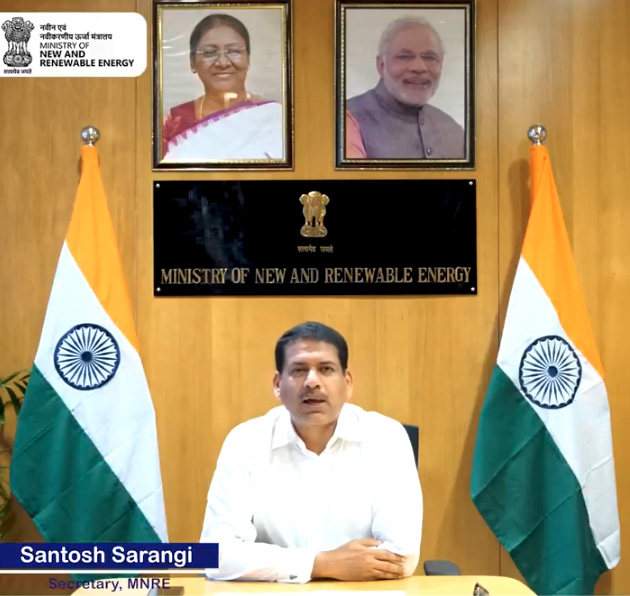New Delhi: Following India’s remarkable achievement of reaching 50 Percent of its installed electric capacity from non-fossil fuel sources five years ahead of its 2030 NDC target, Secretary Santosh Sarangi of the Ministry of New and Renewable Energy (MNRE) extended his gratitude to Prime Minister Narendra Modi.
Secretary Shri Sarangi, speaking on this historic milestone, credited Prime Minister Modi’s visionary leadership for setting ambitious goals and providing the impetus for India’s accelerated green energy transition. “This significant achievement is a testament to the bold targets set by our Hon’ble Prime Minister, Shri Narendra Modi ji,” Shri Sarangi stated. “His unwavering commitment to climate action and sustainable development has driven Bharat’s green transformation, inspiring us to not only meet but exceed our national and international commitments.”
He highlighted how Prime Minister Modi’s emphasis on clean energy, articulated in various forums including the COP26 climate meet in Glasgow where he pledged 500 GW of non-fossil capacity by 2030, has created a clear roadmap for the nation. Shri Sarangi acknowledged the “Panchamrit” goals outlined by the Prime Minister, which have served as a guiding force for the MNRE and other stakeholders in the energy sector.
“The Prime Minister’s vision for a self-reliant and sustainable India has propelled us to this point,” Shri Sarangi added, referring to schemes like PM-KUSUM and PM Surya Ghar: Muft Bijli Yojana, which were launched under the Prime Minister’s guidance and have played a crucial role in expanding renewable energy access and deployment across the country.
This expression of gratitude underscores the government’s collective effort and commitment to achieving environmental sustainability alongside economic growth, with the Prime Minister’s long-term strategic vision identified as a key driver of this success.
In fact India has fulfilled its 2030 Nationally Determined Contribution (NDC) target five years ahead of schedule, with 50% of its installed electric capacity now sourced from non-fossil fuels. This significant milestone was announced by Shri Sarangi, Secretary MNRE, highlighting the nation’s accelerated green energy transition.
MNRE Secretary,Shri Sarangi in his address, underscored the incredible journey that has led to this accomplishment. As of June 2025, India’s total installed electricity capacity stands at approximately 484.8 GW. Of this 243 GW, or 50.1%, is now generated from non-fossil fuel sources, encompassing renewable energy (solar, wind, small hydro, biomass), large hydropower, and nuclear power.
This rapid expansion is largely attributed to the robust growth in solar and wind energy. Since 2014, India’s installed renewable energy capacity has nearly tripled. Specifically, solar power capacity has witnessed an astounding surge, growing more than 39-fold from 2.82 GW in 2014 to 110.9 GW by June 2025. Similarly, wind power capacity has more than doubled, reaching 51.3 GW in the same period.
The achievement reflects India’s unwavering commitment to climate action and sustainable development, even while balancing its rapidly growing energy demands. The shift towards non-fossil fuels is driven by a comprehensive strategy that includes flagship government programs such as PM-KUSUM, PM Surya Ghar: Muft Bijli Yojana, solar park development, and the National Wind-Solar Hybrid Policy. These initiatives have not only decarbonized the energy sector but also generated widespread co-benefits, including enhanced energy access, job creation, and improved public health outcomes.
While this milestone marks a monumental step, challenges remain in translating the installed non-fossil fuel capacity into actual electricity generation. Thermal power, despite now accounting for just under 50% of installed capacity, still produces over 70% of India’s actual electricity due to its consistent availability. Experts emphasize the need for enhanced grid flexibility, improved battery storage solutions, and hybrid projects combining various renewable sources with storage to address intermittency and ensure round-the-clock power supply.
India’s proactive approach positions it as a global leader among developing nations in the clean energy transition. The country continues to set ambitious goals, including a target of 500 GW of non-fossil electricity capacity by 2030 and achieving net-zero emissions by 2070, further solidifying its role in the global fight against climate change.


